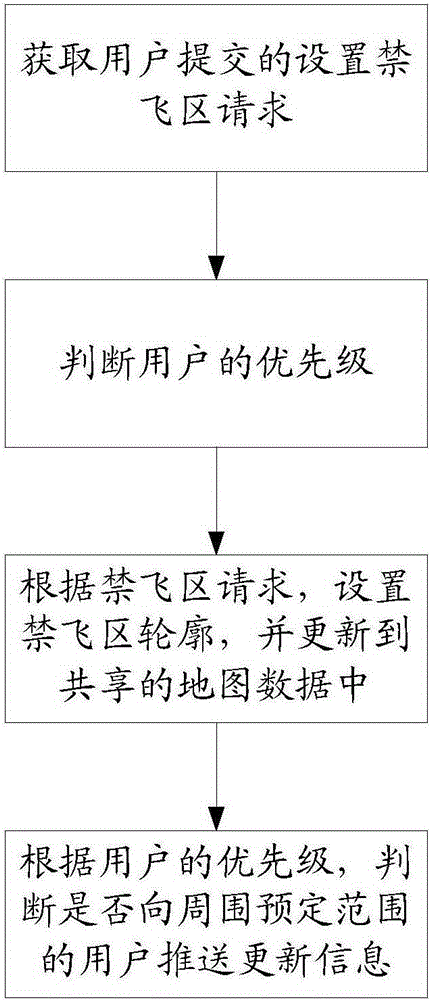Method for setting no-fly zone for unmanned aerial vehicle
A drone and no-fly zone technology, applied in the field of drones, can solve problems such as delayed rescue, public space harassment in private spaces, and impact on emergency department responses, to achieve the effect of protecting privacy
- Summary
- Abstract
- Description
- Claims
- Application Information
AI Technical Summary
Problems solved by technology
Method used
Image
Examples
Embodiment 1
[0013] Such as figure 1 As shown, this embodiment provides a method for setting a no-fly area for drones, which is used to enable the public or organizations to request that drones fly in a specific area to limit their demands to convey to drone users or other public knowledge More specifically, this embodiment provides a real-time push of the no-fly area to the positioning device on the surrounding drone or the handheld terminal of the operator of the drone during an emergency, so as to prevent the drone from affecting the incident area. deal with. The method includes the steps of:
[0014] Obtain the no-fly zone setting request submitted by the user, the no-fly zone request at least including the user's basic identification information and the location information of the no-fly zone;
[0015] Review the request for setting the no-fly zone, and if it passes the review, update the location information of the no-fly zone to the map data, and push it to the user or allow the u...
Embodiment 2
[0025] This embodiment provides a method for setting a no-fly area for drones, which is used to enable the public or organizations to request that drones fly in a specific area to convey their demands to drone users or other public knowledge, more specifically Yes, this embodiment provides a method for ordinary users to prompt the no-fly area to the positioning device on the surrounding drone or the handheld terminal of the operator of the drone, so as to prevent the drone from affecting the normal life and privacy.
[0026] The method includes the steps of:
[0027] Obtain the no-fly zone setting request submitted by the user, the no-fly zone request at least including the user's basic identification information and the location information of the no-fly zone;
[0028] Reviewing the priority of the requesting user, if the priority of the user reaches a predetermined value and is lower than the predetermined value, the requesting user is considered to be an ordinary user;
...
PUM
 Login to View More
Login to View More Abstract
Description
Claims
Application Information
 Login to View More
Login to View More - R&D
- Intellectual Property
- Life Sciences
- Materials
- Tech Scout
- Unparalleled Data Quality
- Higher Quality Content
- 60% Fewer Hallucinations
Browse by: Latest US Patents, China's latest patents, Technical Efficacy Thesaurus, Application Domain, Technology Topic, Popular Technical Reports.
© 2025 PatSnap. All rights reserved.Legal|Privacy policy|Modern Slavery Act Transparency Statement|Sitemap|About US| Contact US: help@patsnap.com

